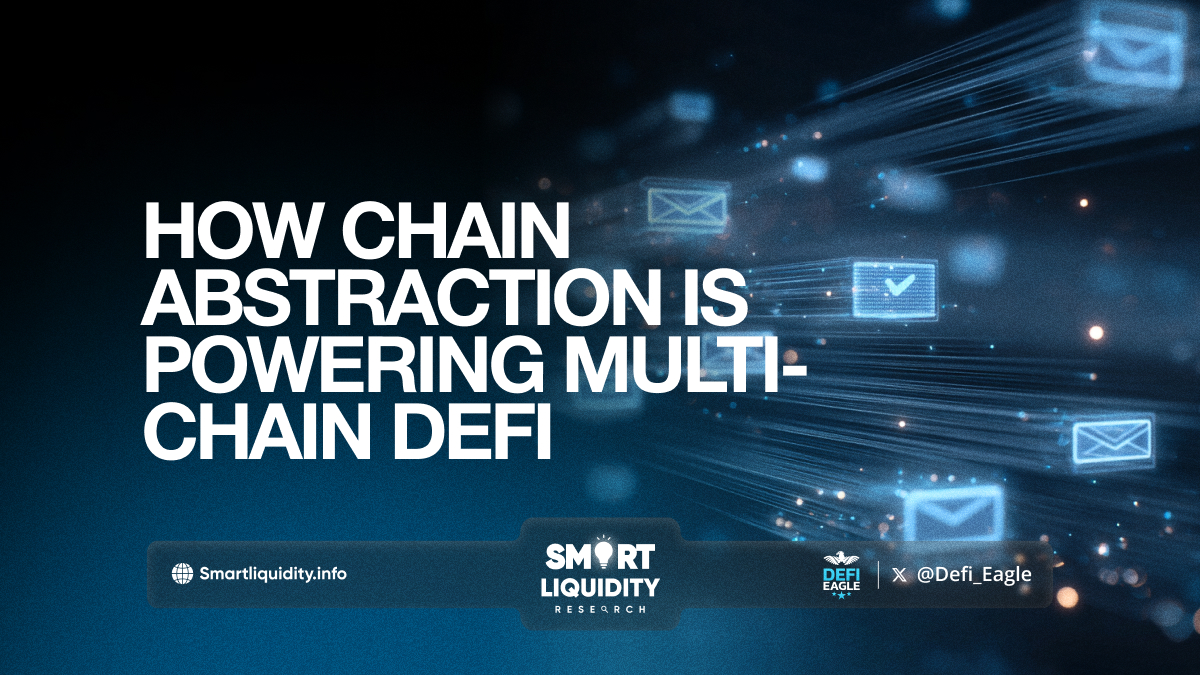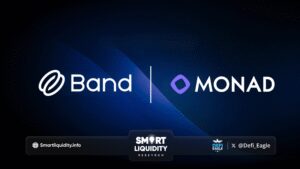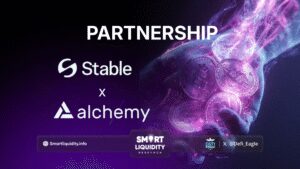How Chain Abstraction is Powering Multi-Chain DeFi


The DeFi ecosystem has grown rapidly, yet achieving a fully interconnected multi-chain environment remains a challenge. Chain abstraction, a key innovation for 2025, will enable seamless blockchain interactions, enhancing efficiency, liquidity, and innovation. This article explores its impact on multi-chain DeFi and its role as a cornerstone for the future of DeFi.
What is Chain Abstraction?
Chain abstraction refers to the ability to hide the complexities and differences of individual blockchain networks, allowing developers and users to interact with them in a unified manner. This eliminates the need for specialized knowledge of each chain’s architecture, simplifying interactions across multiple ecosystems. Essentially, it abstracts away the underlying technical intricacies of a blockchain network, enabling a seamless user experience when accessing services that span different chains.
In the context of DeFi, chain abstraction allows for more fluid transactions, asset transfers, and application deployments across various blockchain platforms, creating a cohesive experience for end-users. With chain abstraction, users no longer need to manage separate tokens or wallets for each blockchain; they can interact with the DeFi ecosystem as a single, unified space.
Multi-Chain DeFi: A Growing Necessity
DeFi has rapidly expanded beyond the Ethereum ecosystem, with blockchains like Solana, Binance Smart Chain, Avalanche, and Polkadot becoming key players in the space. Each of these networks offers unique advantages, such as lower fees, faster transactions, and scalability. However, the multi-chain ecosystem has also led to fragmentation, which can hinder the flow of liquidity, complicate cross-chain communication, and add barriers for developers building cross-chain applications.
For instance, liquidity fragmentation is one of the main obstacles in the DeFi world. Users often face difficulties in moving assets between chains due to the absence of universal standards and protocols. As a result, capital is siloed on different chains, leading to inefficiencies and less liquidity for decentralized applications (dApps).
This is where chain abstraction comes into play. By enabling multi-chain DeFi protocols to work together more seamlessly, chain abstraction offers a pathway to overcome these challenges, driving liquidity across chains and making the entire DeFi ecosystem more interconnected and efficient.
Key Benefits of Chain Abstraction in Multi-Chain DeFi
- Enhanced Interoperability
Chain abstraction significantly boosts interoperability by allowing multiple blockchains to communicate with one another without requiring complex bridging mechanisms. This enables assets, data, and smart contracts to flow freely between different DeFi platforms, which can vastly improve the user experience and increase the total value locked (TVL) across the entire ecosystem.
In 2025, platforms like LayerZero and Cosmos are leveraging chain abstraction to create seamless interoperability between blockchains. Users can trade tokens, use liquidity pools, and participate in yield farming across different networks with minimal friction, unlocking new opportunities for DeFi innovation.
- Reduced Complexity for Developers
For developers, the ability to work across multiple blockchains without having to learn each one’s unique intricacies is a game-changer. Chain abstraction tools provide a more efficient way to deploy decentralized applications (dApps) that can operate across various blockchains, saving time and resources.
Moreover, developers can focus on building innovative DeFi applications instead of dealing with complex cross-chain infrastructure. By using a universal set of APIs or SDKs, they can design protocols that access resources on different chains, accelerating innovation and reducing development costs.
- Increased Liquidity and Capital Efficiency
One of the main issues with a fragmented DeFi landscape is liquidity fragmentation. Different blockchains tend to have liquidity concentrated within their ecosystems, creating bottlenecks that prevent capital from flowing freely. Chain abstraction solves this issue by allowing liquidity providers to access multiple networks at once, creating a more efficient and liquid ecosystem.
Cross-chain lending protocols and synthetic asset platforms are prime examples of DeFi applications that benefit from chain abstraction. By utilizing these protocols, users can leverage assets from different chains in a unified platform, unlocking more capital and creating more dynamic markets.
- Improved User Experience
With chain abstraction, users no longer need to worry about the specifics of each blockchain they interact with. Whether they are trading tokens, participating in governance, or using DeFi protocols, they can do so from a single interface. This reduces the learning curve for new users and simplifies the experience for veterans, making DeFi more accessible and user-friendly.
In 2025, platforms are increasingly adopting cross-chain wallets and DeFi aggregators that abstract the complexities of managing different assets across chains. By using a single wallet that supports assets from multiple chains, users can interact with DeFi protocols without ever worrying about the underlying blockchain.
Chain Abstraction Protocols: Leading the Way
Several key protocols and technologies are paving the way for the widespread adoption of chain abstraction in DeFi:
- LayerZero: A protocol that enables omnichain interoperability, allowing dApps to interact with multiple blockchains seamlessly. LayerZero offers a low-latency, low-cost solution for cross-chain communication, laying the foundation for future DeFi ecosystems.
- Cosmos: Known for its “Internet of Blockchains,” Cosmos is a network that connects independent blockchains through its IBC (Inter-Blockchain Communication) protocol. This enables decentralized applications to operate across multiple chains, creating a truly interconnected DeFi space.
- Polkadot: Polkadot’s unique parachain structure enables cross-chain communication and interoperability while maintaining individual blockchain sovereignty. This allows DeFi projects to tap into the power of Polkadot’s multi-chain ecosystem.
Challenges and the Future of Chain Abstraction
Despite the clear benefits of chain abstraction, challenges remain in scaling these solutions. Security is one of the most pressing concerns, as cross-chain interactions create more attack vectors. Ensuring that these systems remain secure while scaling to accommodate a growing number of chains and users will require continuous innovation.
Moreover, the DeFi space is highly competitive, and not every chain will be able to integrate seamlessly into the broader multi-chain ecosystem. The most successful solutions will likely be those that prioritize both user experience and the technical robustness of their interoperability layers.
Looking ahead to 2025, we can expect that chain abstraction will become a critical component in achieving a fully decentralized and interoperable DeFi ecosystem. With more blockchains coming online and the demand for cross-chain liquidity growing, the need for seamless integration will only increase. As a result, chain abstraction will not only power multi-chain DeFi but will also drive broader adoption of blockchain technology in finance.
A New Era for DeFi
As we enter 2025, chain abstraction is the key to unlocking a truly decentralized, cross-chain DeFi world. By abstracting away the complexities of interacting with multiple blockchains, it enables a seamless experience for users and developers alike. With enhanced interoperability, reduced complexity, increased liquidity, and improved user experiences, chain abstraction will undoubtedly play a pivotal role in shaping the future of DeFi. Whether you’re a developer, a liquidity provider, or an end-user, understanding and leveraging chain abstraction will be crucial to navigating the next phase of decentralized finance.




